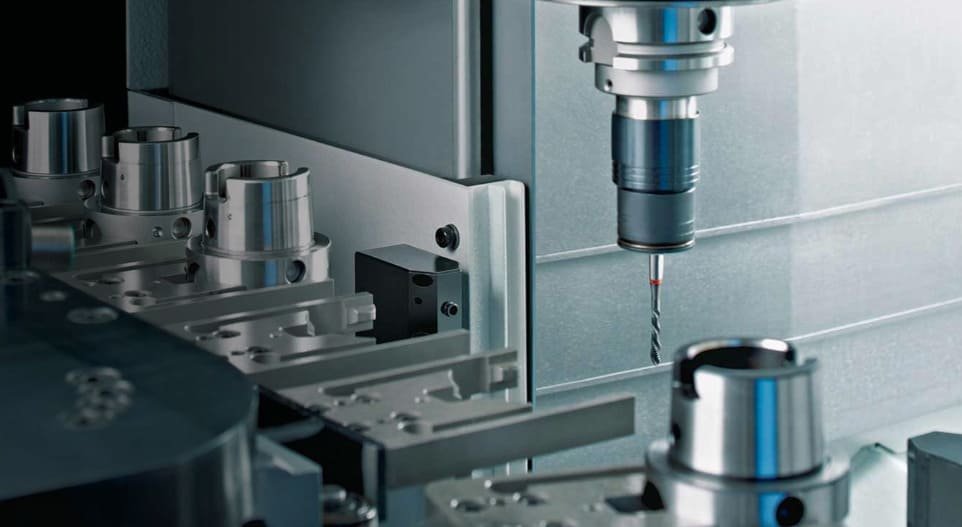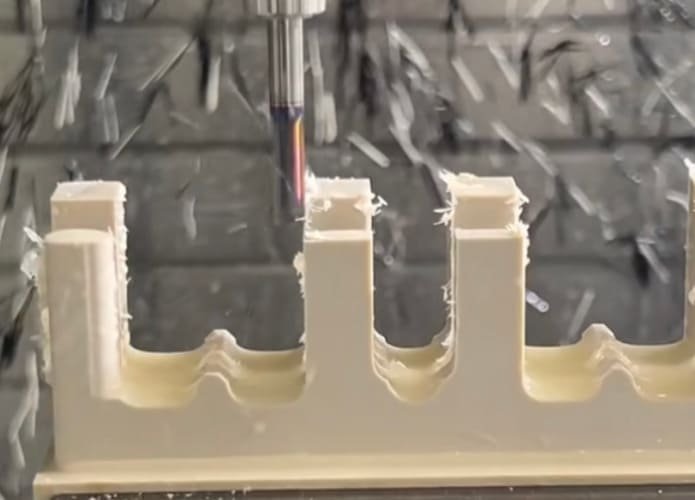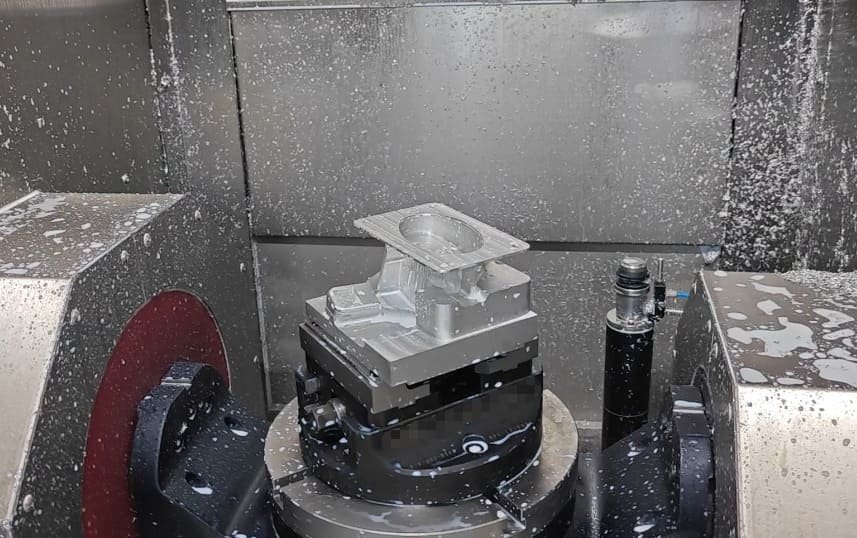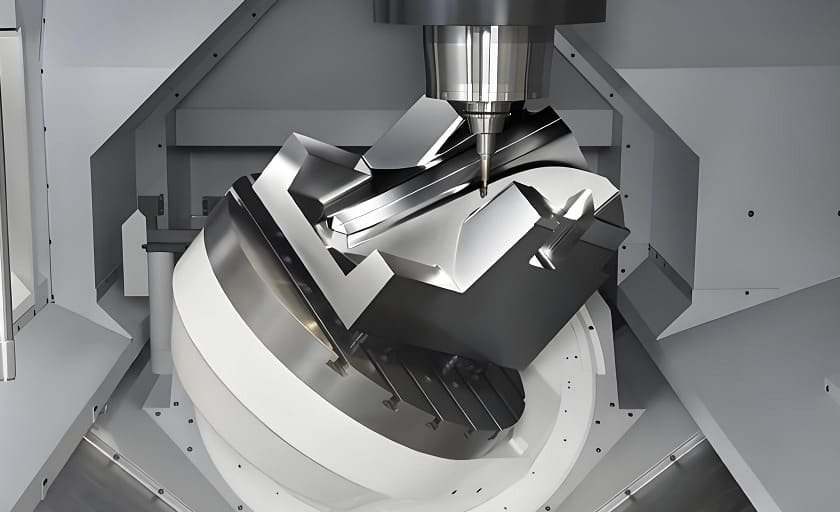Tolerance in machining defines how much a part’s dimension can vary from its intended value. When tolerances are tight, this allowed difference becomes extremely small—mostly less than ±0.005 inches. Achieving such accuracy is crucial for parts to function reliably and safely in industries like aerospace, automotive and medical.
In this blog post we will explain the key principles for reaching tight tolerances. You will learn how process control and inspection help manufacturers meet these demanding requirements.
Types and Specification of Tolerances
Understanding the different types of tolerances and their specification on technical drawings is the first step toward precision.
1. Dimensional vs Geometric Tolerances
Dimensional tolerances set limits for the size of features such as length, width or diameter. Geometric tolerances, on the other hand, control the orientation, shape or position of features. These tolerances make sure that flatness, parallelism as well as roundness meet the design’s requirements.
| Tolerance Type | Controls | Example |
|---|---|---|
| Dimensional | Size (length, diameter) | A shaft’s diameter must be 50 mm ±0.05 mm. |
| Geometric | Form (flatness, roundness) | A surface must be flat within 0.02 mm. |
2. Unilateral vs Bilateral Tolerances
Tolerances also show the direction (+ or -) in which a dimension can vary. Bilateral tolerances let the size go above or below the nominal value (for example ±0.1 mm). However unilateral tolerances usually allow change in only one direction (such as +0.1 or -0.0 mm).
| Tolerance Type | Variation | Typical Use Case |
|---|---|---|
| Unilateral | One direction only | Press‐fit shafts that cannot exceed a maximum size. |
| Bilateral | Both directions | General parts where deviation on both sides is acceptable. |
3. Specifying Tolerances in Engineering Drawings
Engineers use detailed technical drawings to record these requirements. They apply GD&T symbols to communicate tolerances. This symbolic language follows ASME & ISO standards and this gives manufacturers a clear as well as universal set of instructions.
4. Levels of Tightness
What does “tight” mean in machining? Standard machining mostly gives tolerances around ±0.1 mm (±0.004″); but precision work demands much smaller limits. Tight tolerances are mostly within ±0.025 mm (±0.001″) or even as close as ±0.013 mm (±0.0005″). These narrow ranges have a major impact on how well a part performs.
Material Considerations for Tight Tolerances
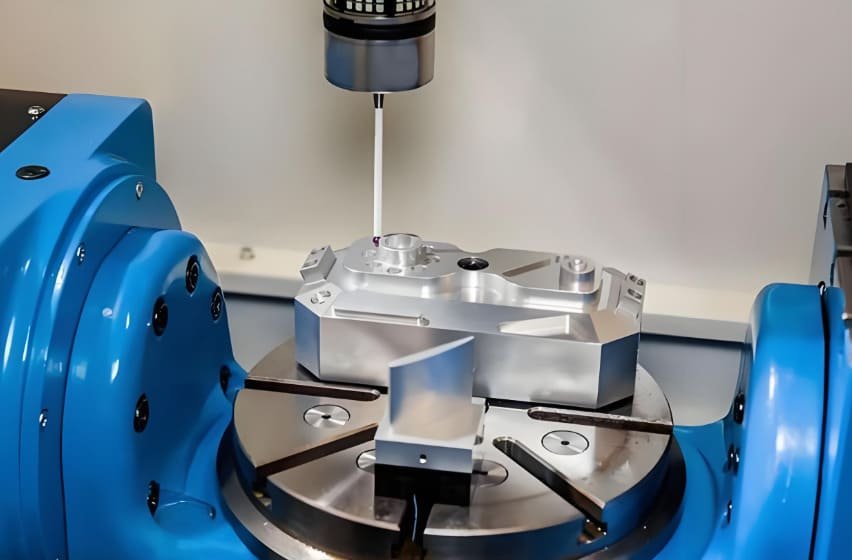
Selection of correct material is essential for getting tight tolerances. Properties of every material have a direct impact on its stability and how it behaves during machining.
Metals vs Polymers
Metals & polymers react differently to machining forces. Metals provide more stiffness & stability. Polymers, in contrast, are lighter and often resist chemicals better. However polymers expand more with heat and can deform over time which makes it harder to keep tight tolerances. The table below compares some properties of common metals and polymers.
| Material | Stiffness | Thermal Expansion (µm/m·°C ) | Machinability | Cost |
|---|---|---|---|---|
| Aluminum 6061 | ~69 | ~23 | Excellent | Low |
| Stainless Steel | ~193-200 | ~17 | Moderate | Moderate |
| Titanium | ~110-119 | ~8.6–9 | Challenging | High |
| PEEK | ~3.6 | ~47 | Good | High |
| Acetal (POM) | ~2.9-3.2 | ~85–110 | Good | Moderate |
| Nylon | ~2-4 | ~80–120 | Moderate | Low |
Hardness, Machinability & Thermal Coefficient
Hardness influences how easily a material can be machined. Harder materials do not deform as easily but they need more force and create more heat when cut. Materials with high thermal expansion can change their shape when heated which affects dimensional accuracy.
Selection of Suitable Alloys or Plastics
When tight tolerances are needed for metal parts, stable alloys like Aluminum 6061 or stress‐relieved steels are good choices. For plastic parts, high‐performance polymers such as PEEK & Acetal (Delrin) provide the dimensional stability needed for precision.
Partnering with a manufacturer like CNCPOR makes material selection easier. We help customers choose such alloys and plastics that balance cost, stability along with machinability.
Raw Material Quality & Pre Processing Effects
Quality of raw material stock matters a lot. Inconsistent material or internal stresses can lead to warping during machining. Pre‐processing steps like annealing improve stability and remove internal stresses. This leads to more reliable machining results.
Machinery and Tooling Capabilities
Choice of right equipment is just as important as selection of correct material when your aim is precision.
1. High Precision Machine Tools
Tight tolerance work cannot rely on conventional machines. Only high precision CNC machines with extraordinary rigidity and thermal stability can deliver the needed results. These machines use high accuracy spindles and have almost no backlash. Every movement stays precise & repeatable. Some ultra precision machines can reach positional accuracy under 0.3 micrometers.
2. Cutting Tools, Inserts, Coatings
Cutting tool’s quality & performance matters a lot as well. Tools must be sharp and high‐grade because dull edges can push the workpiece and reduce accuracy. Use of advanced coatings and special tool shapes help control heat and limit wear. This approach assures that every part is produced with consistent and reliable accuracy.
3. Tool Holding, Fixtures & Workholding
Holding the workpiece securely is as important as the cutting itself. The fixture must grip the part tightly to stop any movement or vibration. If the workholding is unstable even a little, errors can appear and threaten the final tolerance.
Maintaining Tolerances During CNC Machining
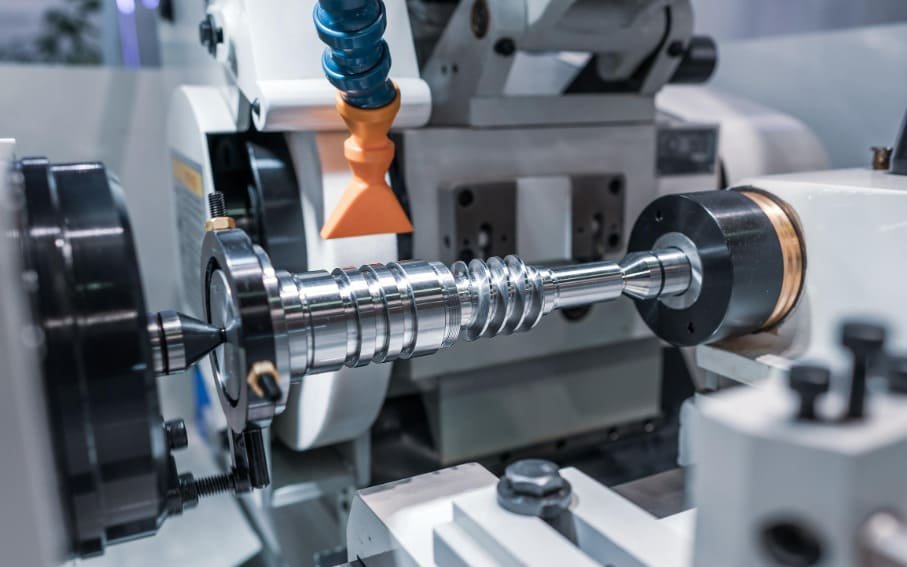
Achieving precise results in machining is difficult, even with advanced equipment. At every step, inspections and measurements must confirm that tolerances are met. Moreover managing different variables throughout production is necessary to maintain accuracy.
Thermal Expansion & Heat Management
Heat can reduce machining accuracy. Both the material and machine parts expand when temperatures rise and this leads to dimensional errors. Use of temperature controlled coolants along with steady operating temperatures for machines are important for thermal control.
Calibration, Maintenance & Machine Condition
Precision depends on the condition of the machine. Calibrating the axes and spindle on a regular schedule keeps movements accurate. Servicing machines and replacing worn parts prevents errors and helps maintain top performance. These actions are essential for the production of consistent, high quality parts.
Tool Wear, Deflection & Cutting Parameters
Cutting tools lose sharpness or may bend during operation. When this happens, cuts become less accurate and surface finishes suffer. Choice of right cutting speeds, feed rates and depths of cut helps reduce tool wear and deflection. The table below lists the best values for CNC milling with different materials.
| Material | Cutting Speed (m/min) | Feed rate(mm/min) |
|---|---|---|
| Aluminum | 200 to 400 | 300 to 500 mm/min |
| Mild Steel | 80 to 150 | 200 to 400 mm/min |
| Titanium | 30 to 70 | 80 to 150 mm/min |
| PET | 300 | 0.006 to 0.018 in/rev |
| PEEK | 250 to 500 | 0.004 to 0.018 in/rev |
Note: These milling values are general recommendations only. They may change depending on the machining process or the specific alloy used.
Surface Finish & Secondary Processes
Sometimes, milling or turning alone cannot achieve the required tolerance. In these situations, secondary finishing steps are needed. Processes such as grinding, lapping or polishing improve the surface and bring dimensions within the required limits.
Environmental & Shop Floor Controls
Machining precision also depends on the shop environment. Climate control in the shop keeps temperature and humidity stable which protects machines and workpieces from changes. Controlling vibration and keeping the area clean also help maintain a stable machining process.
Design & Engineering for Tight Tolerances
Precision in machining starts with the design stage, not just with machining. Careful engineering makes tight tolerances practical and functional while also keeping costs under control.
1. Designing for Manufacturability
Designers should use tight tolerances only where they are truly needed. This practice, called Design for Manufacturability (DFM), means applying tolerances of ±0.001 inches to only the most important features. Standard tolerances work well for other dimensions and this help reduce both time & cost. By following this method, the design becomes easier to manufacture.
2. Tolerance Stack‐Up & Assemblies
When designing assemblies, engineers must look at how tolerances from different parts add up. If they do not account for this “tolerance stack-up,” parts may not fit together as planned. To avoid problems, engineers run stack‐up analysis during the design stage. This step helps them predict and control how variations combine which assure the final assembly works as needed.
3. Use of Allowance vs Interference Fits
Designers need to decide how parts will fit together. They can specify an allowance which creates a gap for a clearance fit or an interference which causes a press fit by overlapping material. These choices are crucial for making sure both moving and fixed assemblies function properly.
Challenges & Common Issues in Achieving Tight Tolerances
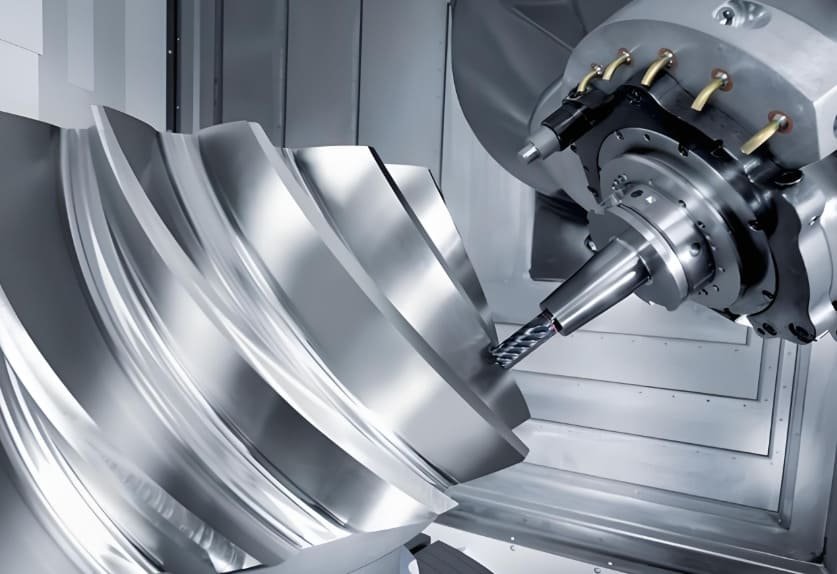
Maintaining tight tolerances is a demanding task. Several common problems can affect the precision and quality of machined parts.
Workpiece Distortion / Warping
Cutting heat, overly tight clamps and built-in residual stress may individually or together distort the workpiece. When distortion occurs, the component’s geometry changes and accuracy is lost.
In CNCPOR, we uses staged machining and applies intermediate stress‐relief methods. These steps help preserve the correct geometry even for thin‐walled or complicated parts.
Vibration, Chatter & Tool Deflection
Machining can produce chatter (vibration) which threatens precision. This problem may result from a machine lacking rigidity, using the wrong cutting tool or setting cutting parameters too aggressively. Chatter leads to poor surface finishes and causes deviations in important dimensions.
Part-to-Part Variability
Keeping every part in a batch consistent is difficult. Small changes in raw material batches or gradual tool wear during production can make parts differ from each other.
Inspection & Measurement Errors
Errors can happen during the measurement process. The calibration and resolution of inspection tools such as calipers or CMMs has a role in this error. Operator skill and environmental factors also affect measurement reliability. If the inspection system is not dependable, it may accept faulty parts or reject good ones.
Cost, Time & Yield Trade‐Offs
Tighter tolerances increase costs; as to obtain tight tolerances, machines must run longer, inspections must be more frequent as well as complicated, and also special tooling will be needed. These factors raise scrap rates, extend production times and thus drive up overall expenses.
Tips & Techniques to Achieve Tight Tolerances
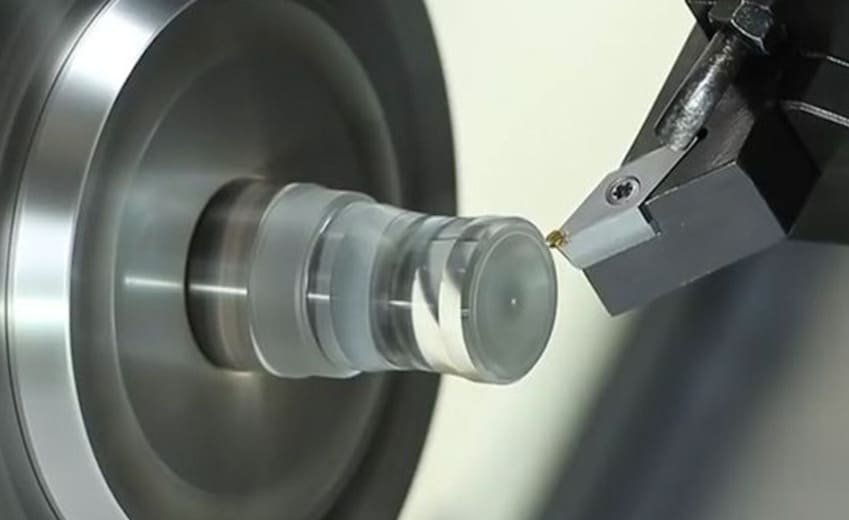
A methodical process helps manufacturers produce parts with tight tolerances, even though challenges still exist.
Professionals can use these seven important techniques to reach high precision:
Allow the machine to complete its warm‐up cycles before starting work. This step helps the machine reach thermal stability and also reduces errors caused by thermal expansion.
- Select sharp, high quality cutting tools and check them regularly for wear. A sharp tool cuts more cleanly. If the tool becomes worn, it can cause the material to deflect.
- Secure the workpiece firmly in a suitable fixture to avoid vibration. Keeping tool overhang to a minimum is also vital for maintaining stability.
- Adjust cutting parameters and use lighter passes for finishing. This approach limits tool deflection, lowers heat as well as reduces stress on the part.
- Apply Statistical Process Control (SPC) to track the process as it happens; with real‐time monitoring, you can make quick corrections if dimensions start to change.
- Calibrate machines often and perform preventive maintenance. Routine checks confirm that the machine continues to operate as intended.
- If machining alone cannot achieve the required dimension, use secondary finishing methods such as precision grinding or lapping.
Industrial Uses of CNC Precision Machined Parts
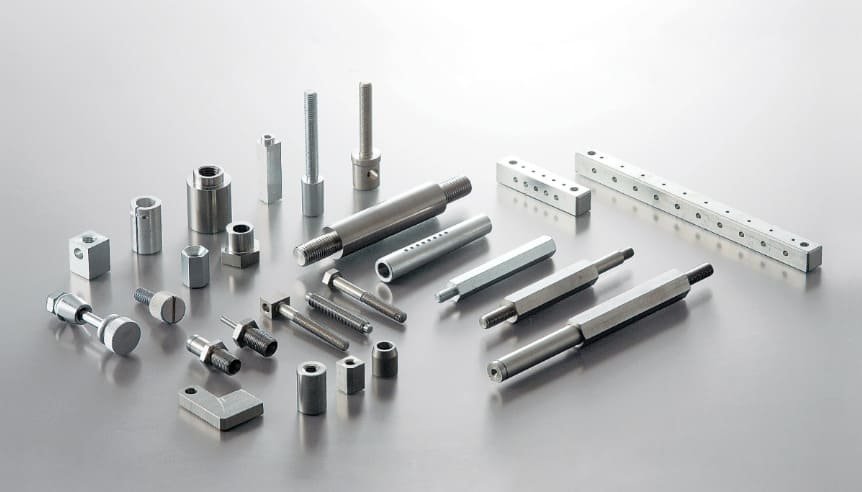
Many important industries need CNC machined parts with tight tolerances, to guarantee safety with performance.
Aerospace & Defense
This industry requires very precise parts that must withstand high stress and large temperature changes. Examples include turbine blades, structural elements and landing gear parts. These parts mostly need tolerances as tight as ±0.0005 inches to keep flights safe and improve fuel efficiency.
Medical Devices
Precision is crucial in the medical sector because it affects patient safety. Surgical tools, implants and advanced prosthetics must fit and function perfectly. Most of these parts are made to tolerances between ±0.0005 & ±0.001 inches.
Automotive
Accurate machining is vital for modern vehicles to perform well and last longer. Manufacturers make components such as fuel injection nozzles and transmission gears to strict tolerances, often as close as ±0.001 inches. These precise parts help improve efficiency and extend the life of automotive systems.
Inspection & Quality Assurance
Verifying that each part meets its tolerance is just as important as machining itself. Rigorous inspection and quality assurance steps assure every part matches its exact requirements.
1. Coordinate Measuring Machines (CMM) & Laser Scanning
Final checks rely on advanced metrology tools. Coordinate Measuring Machines use a precision probe to capture part geometry with micrometer accuracy. Laser scanning on the other hand offers a non contact method which quickly gathers millions of data points to create a detailed 3D model for review.
2. In – Process Monitoring & Gauging
Modern CNC machines use probes or laser systems to monitor the workpiece during machining. These systems check parts in real time. They allow immediate adjustments which reduces scrap and keeps quality consistent from the first part to the last.
3. Surface Finish & Geometry Verification
Besides checking dimensions, tools like profilometers measure key geometric features. They assess flatness, concentricity as well as surface roughness. These checks confirm that both the shape and texture of every part meet all engineering standards.
4. Statistical Process Control (SPC)
Statistical Process Control uses data to manage and improve manufacturing processes. By tracking values like Cp and Cpk, manufacturers can watch performance, spot trends and prevent defects. This assures uniform quality.
For customers who need extra proof, we can provide Cp/Cpk data or formal inspection reports such as FAIR or PPAP.
How to Choose the Right Supplier for CNC Machined Tight Tolerance Parts
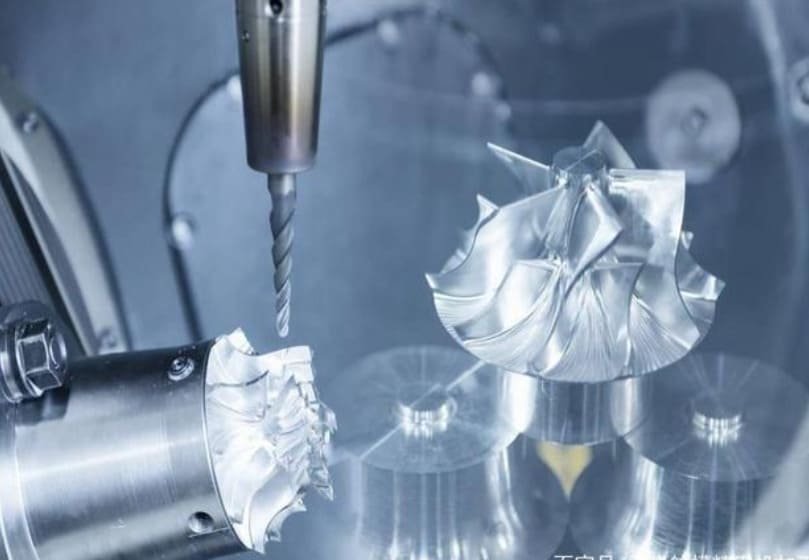
When precision matters, choice of right partner becomes critical. The supplier you select will have a direct impact on your project’s quality as well as its result.
Relevant Experience
Look for a supplier who has proven experience in your industry. This ensures that they understand the unique challenges of your industry and have delivered high precision parts before.
Knowledge of Standards
Check that the supplier holds certifications like ISO 9001 or AS9100. These certifications show they follow strict quality management systems.
Machining Capabilities
Verify that the supplier uses up-to-date equipment such as multi‐axis CNC machines and advanced inspection tools. They should consistently meet tolerances of ±0.01 mm or better.
Knowledge of Materials
A capable supplier knows how to machine many types of materials. They will choose the right tools and techniques for each metal or plastic.
Portfolio
Ask to see examples of their completed projects. Reviewing similar parts will help you feel confident in their ability to meet your precision needs.
To Sum Up
Tight tolerance machining has a key role in making high quality parts that meet strict dimensional requirements. This process protects the safety, reliability as well as the performance of components in essential industries. Achieving these tolerances requires advanced machinery, skilled operators and strict quality checks.
If you need CNC machining services that can deliver tight tolerances, CNCPOR is a strong choice for your precision manufacturing needs. You can contact us anytime.
Related Questions
Is 0.0005” a tight tolerance?
Yes. A tolerance of ±0.0005 inches is considered extremely tight. Most standard machining work uses tolerances around ±0.005 inches.
How do I determine the tolerance of a CNC machined part?
You can find a part’s tolerance by reviewing its engineering drawing. Look for Geometric Dimensioning and Tolerancing (GD&T) symbols and limit or fit details that show the allowed variations.
Which machines are best for tight tolerance work?
To achieve tight tolerances, use advanced multi‐axis CNC machines. These should have thermal compensation, high resolution feedback and high quality cutting tools.

